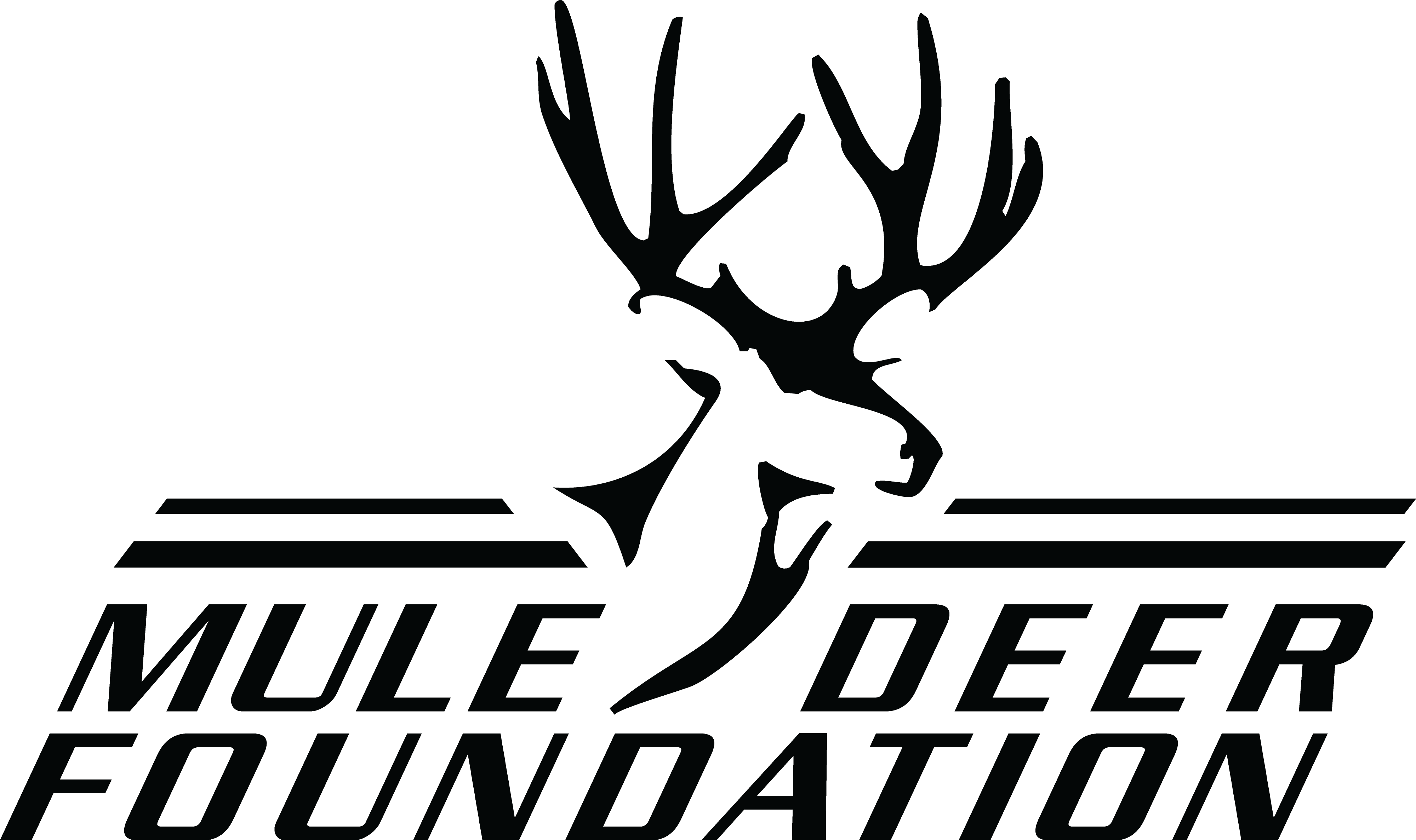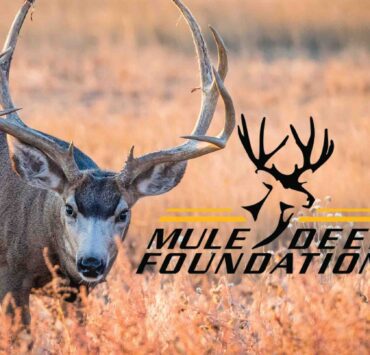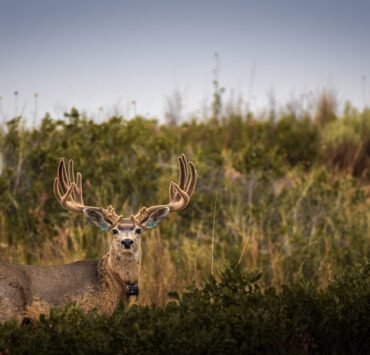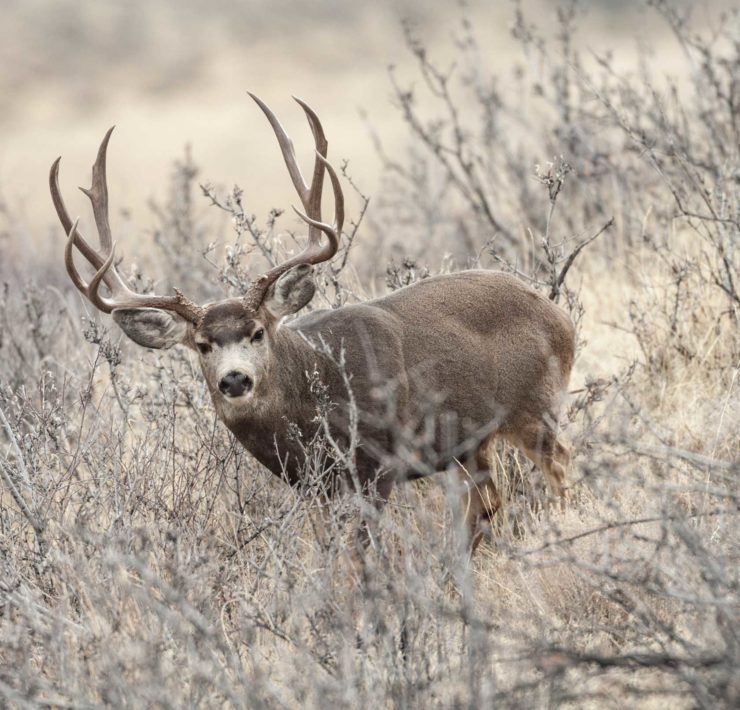Setting Back the Cheatgrass Line
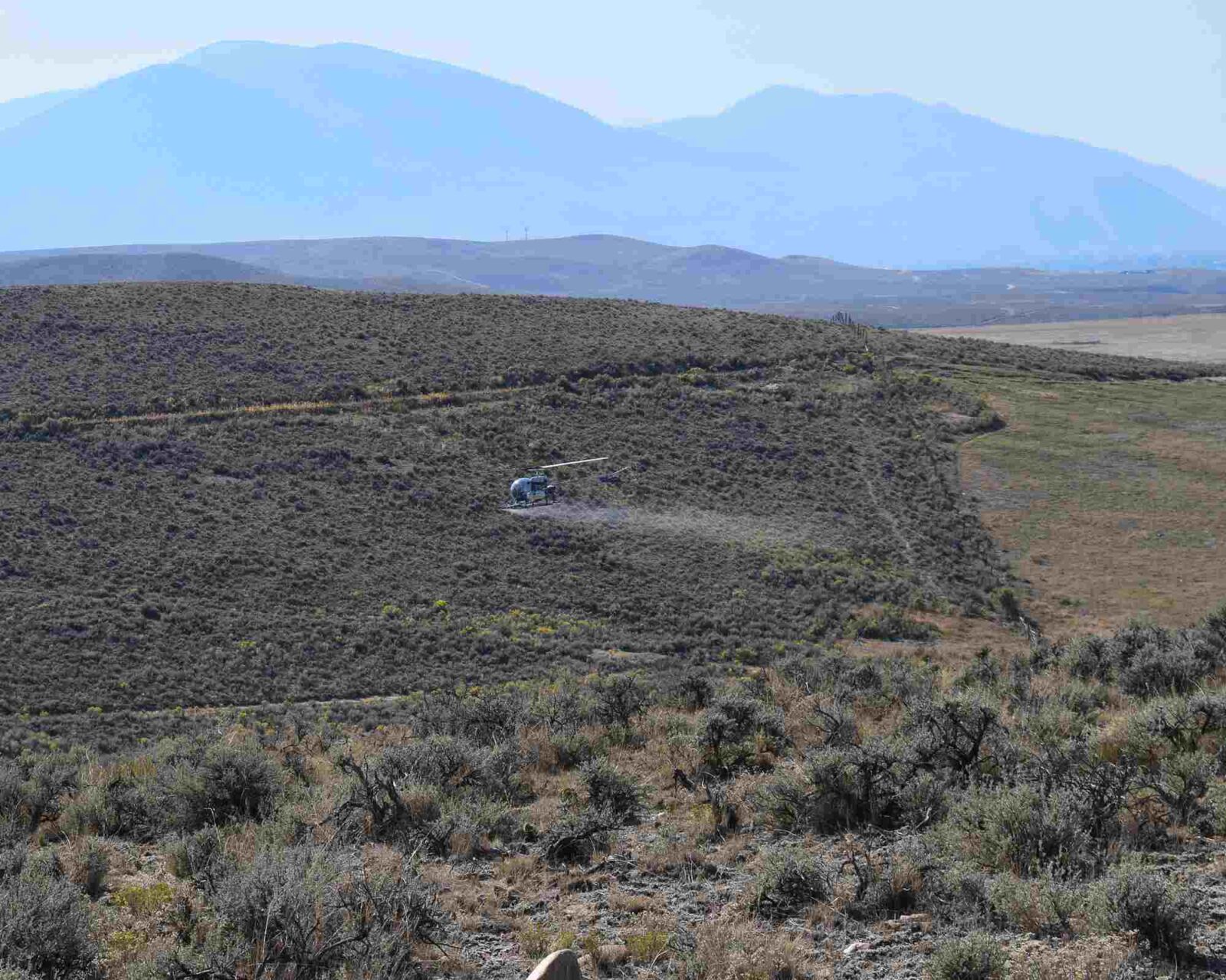
Jessie is a home-grown Idahoan, who grew up working on…
How Removing Cheatgrass Will Grow More Deer on the Hillside
In 2020, the Mule Deer Foundation joined the battle to fight cheatgrass and other annual invasive grasses in Idaho. By strategically leveraging matched funds, labor, and in-kind resources from numerous partners, MDF secured a grant through the National Fish and Wildlife Foundation (NFWF) Rocky Mountain Rangelands Grant. This grant will allow MDF to treat and remove cheatgrass on at least 3,500 acres of priority winter range for mule deer and elk. The area of treatment is in the Lemhi Valley, which is designated as a big game migration corridor and winter range priority area by the Idaho Department of Fish and Game (IDFG) under their Secretarial Order 3362 action plan.
You might be asking what is the problem with cheatgrass and other noxious weeds? Let’s briefly go through what mule deer like to eat and why. Unlike cattle and elk, the stomach of a mule deer does not allow food to sit for long periods of rumination and digestion. Mule deer must eat food that is both high in protein and low in digestibility. Unfortunately, cheatgrass and most noxious weeds do not meet the criteria needed to feed mule deer and many other wildlife species. Mule deer thrive on shrubs like sagebrush, bitterbrush, and snowberry along with native forbs like geranium and lupine.
Cheatgrass or other annual invasive grasses like medusahead and ventenata move in after disturbances, often after wildfire. When they become established, the landscape starts to convert to a monoculture annual invasive grassland. If left untreated, and this area is prone to burn again, cheatgrass would become the dominant plant. What happens next is not a pretty picture.
Cheatgrass can prevent other plants from growing because it has adapted to draw up the first and last water sources of the year.
For those not familiar with cheatgrass, it is the plant you see on the hillside that greens up first and then turns golden and dry the rest of the year. Cheatgrass grows a thick thatch that covers the ground leading to other seeds not being able to penetrate the thatch. To make things worse, the dry, thatch-covered ground becomes a supercharged fuel source. When a fire comes through, it burns significantly hotter and more frequently than the days before cheatgrass invasion—and the landscape becomes even more vulnerable to spreading cheatgrass. This is not natural fire any longer. The key here is when cheatgrass is present, fire is no longer beneficial.
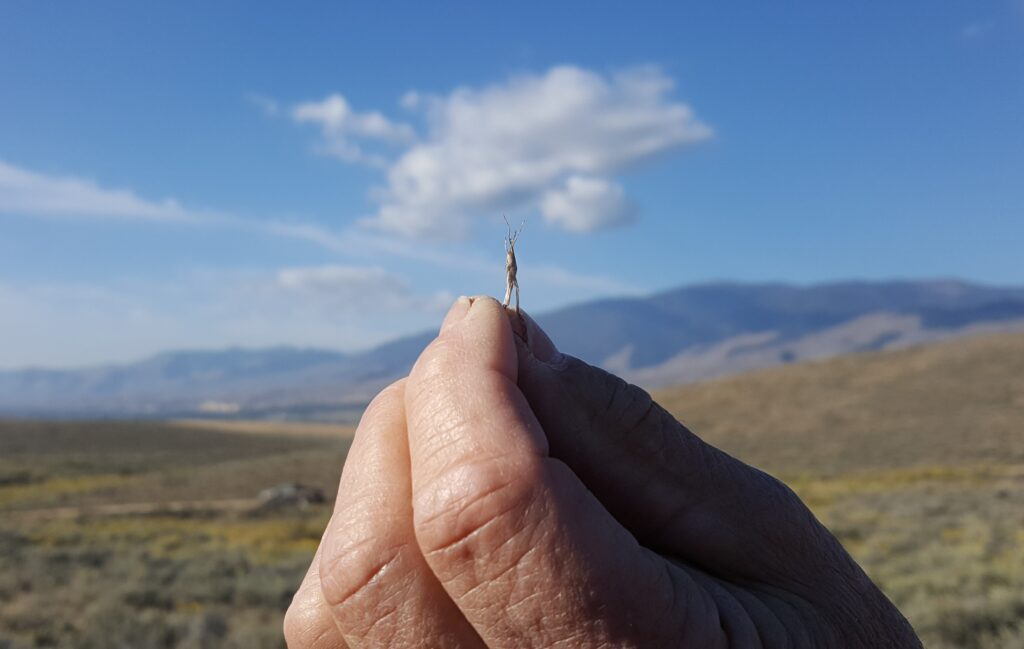
There are several options to stop this vicious cycle of habitat degradation. First, prevent cheatgrass in the first place. Cheatgrass can only expand when two things are present: a seed source of cheatgrass and disturbance that allows it to move in—disturbance can be in the form of overuse, roads, mining, off-road travel, landslides, or fire. The MDF treatments strategically seek to make already good habitat stay resilient. Protecting mostly intact habitat rather than reversing damage is far more economical and protects vastly more acres from invasion compared to trying to reverse an area that has become dominated by cheatgrass. MDF is not the first organization to recognize the importance of protecting core intact habitat. The conceptual model, envisioned by several agencies, is to “Defend the Core, Grow the Core.” Core areas are those where the habitat has little cheatgrass present; pushing that cheatgrass line back through treatment and proper management of the land will protect millions of acres from future weed invasion.
How do we push back the cheatgrass line? With a heavy hammer. Central Idaho is some of the most intact, native habitat in Idaho. Many wildlife species thrive in this area, which also has some of the most steep and rugged country in the lower 48 states. This area is impossible to effectively treat with a backpack sprayer if you want to keep up with the pace that cheatgrass can invade an area. Aerial application is the most appropriate tool if you want to win the battle against cheatgrass invasion in rugged habitat. In central Idaho, small helicopters can effectively navigate steep terrain and have a tight, precise area of treatment. For example, the U.S. Forest Service (USFS) and Bureau of Land Management (BLM) use drift cards to document that the chemical from the helicopter does not travel more than 150 feet from the targeted area. Often, the drift is less than 25 feet. The licensed aerial applicators have many tools at hand that ensure treatments are both safe, effective, and precisely mapped. Drift retardant is added that makes the chemical heavier, so it falls to the intended area faster, further avoiding issues of drift.
How effective is treatment of cheatgrass you may be wondering? In 2018, the Salmon-Challis National Forest began helicopter treatment of cheatgrass in an area called the Salmon River Breaks. This area was formerly intact habitat and critical winter range for deer and elk. A natural wildfire in 2012 blew through the area, burning hundreds of thousands of acres. The fire at high elevations opened canopy that needed to be open, and this allowed more beneficial forage to grow in its place at those high elevations. However, the fire at low elevations destroyed sagebrush and opened a Pandora’s box of noxious weeds. Prior to the fire, the area supported one of the highest densities of wintering elk and mule deer in the region. Post-fire, the area exploded with cheatgrass, knapweed, and rush skeleton weed. In early November 2018, the Salmon-Challis NF treated an 1,800-acre area using the chemicals Milestone and Plateau and documented an 80-90% reduction in cheatgrass. The following year, 2,000 more acres were added and again saw 80-90% reduction in the first year. Many other USFS and BLM offices are treating cheatgrass, especially in areas where core sage grouse habitat is still intact. Post-fire and pre-fire treatments are showing success at removing or preventing the conversion to cheatgrass.
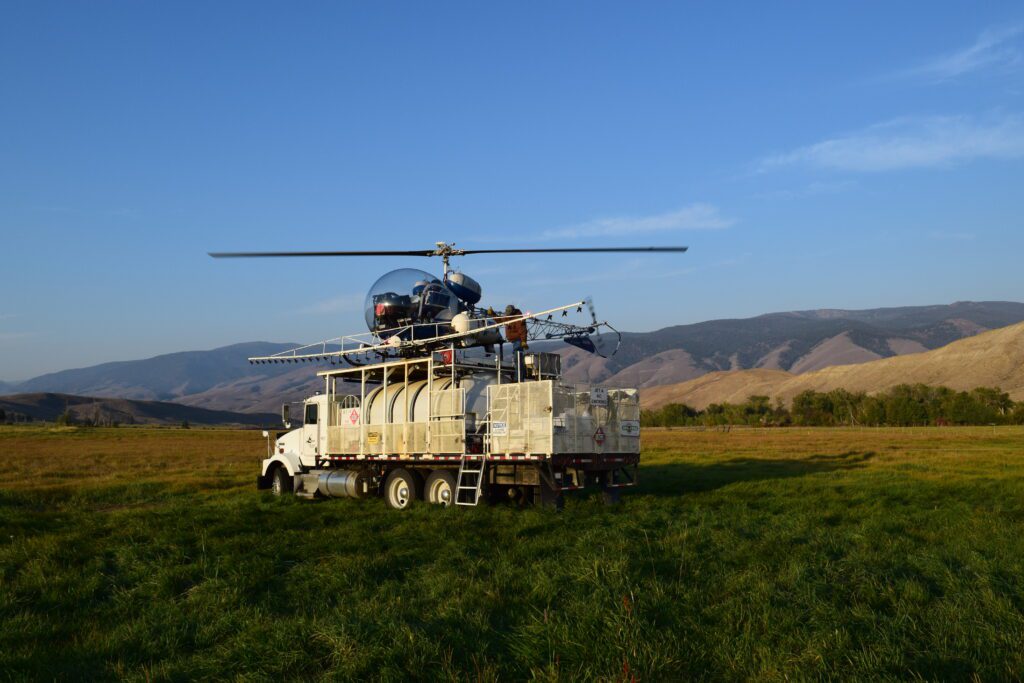
New chemicals are now being developed that more precisely target cheatgrass while leaving native habitat intact and able to flourish after the cheatgrass treatment. The way cheatgrass grows makes it vulnerable to two types of treatments. In late fall, cheatgrass is one of the last plants on the hill to green up. In fact, cheatgrass has another green-up and sets seeds right after the first frost. Other plants take the first frost as their cue to send resources to their roots and prepare for a long harsh winter with food storages underground. Cheatgrass is an annual plant, so all resources are put into seed growth, because it does not grow back from its roots. Milestone and Plateau have been used for years to treat invasive grasses and many noxious weeds. They are effective on cheatgrass when used at that late green-up phase after the first frost when most native plants are much less vulnerable to chemical treatments after they have put their resources to their roots. The amount of Milestone and Plateau used at this time can be very low, and still knock out cheatgrass without hurting native vegetation or soil crusts. A new chemical available now is Indaziflam, which removes the seed source of cheatgrass. This new chemical has been on the market for around 15 years now and does not kill any living part of plants, does no damage to aquatic species, and has longer-term control. The downside to Indaziflam is that it is currently 9x the cost of other chemicals used to remove cheatgrass.
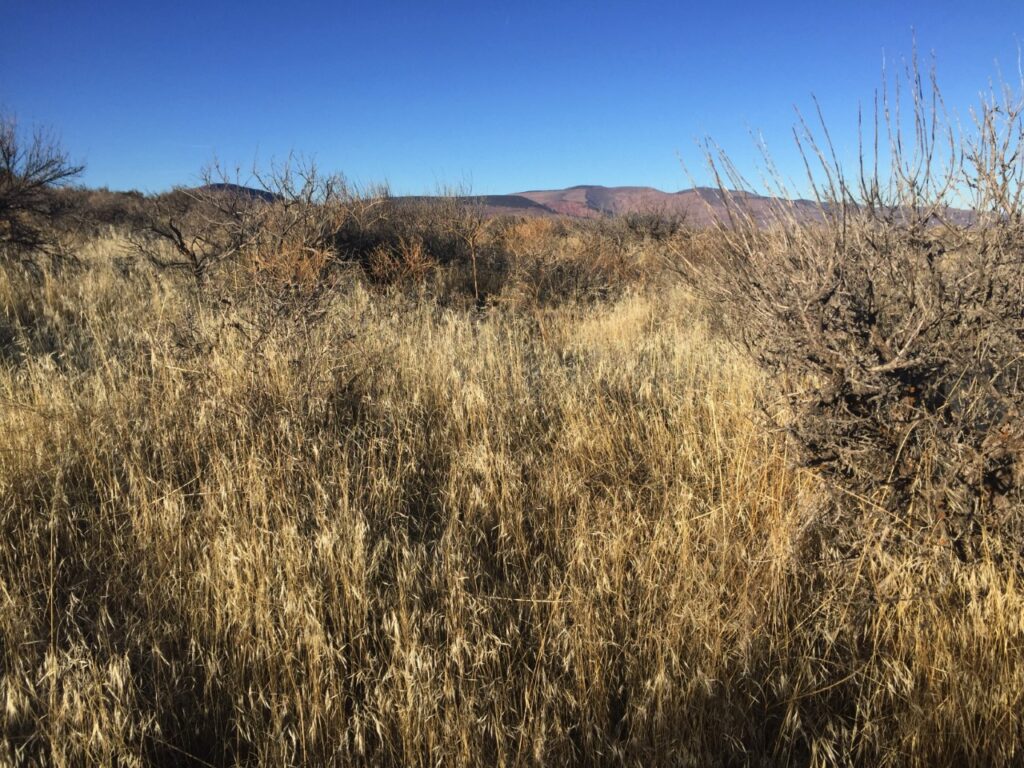
MDF is using Indaziflam on private and state lands, because treating the seed source saves time and money on retreatments down the road. MDF can also cross fence-lines from public to private lands. For example, USFS treatment of cheatgrass must be applied to USFS lands only. USFS is treating at a large-scale and doing a fantastic job improving habitat for important species like mule deer, elk, and sage grouse. Those protected lands and the investment made to protect those lands is substantial. MDF can then treat the private and state lands that would otherwise be a donut-hole of cheatgrass and other associated noxious weeds adjacent to public lands where it has been treated and removed. Many of the private lands that are treated are base properties that later turn cows out on the range at other times of the year. Base properties of grazing permittees are especially important as cattle carry invasive plant seeds from private property into more remote areas of federal land making new infestations difficult to find and treat. Likewise, untreated adjacent land can host continuous fine fuels in the form of cheatgrass that would continue to threaten treated lands. The successful removal of cheatgrass will greatly reduce fine fuels, further improving the resiliency of the landscape in this fire prone area. The restoration efforts will cross boundaries and ownerships creating a seamless line of defense across a large landscape of priority winter range for big game and other wildlife.
MDF will continue next year to strategically manage invasive plants by removing cheatgrass from the edge of expansion.
These efforts will improve habitat for wildlife and greatly lower fine fuels and fire risk across vast acres of shared landscape. The treatment area consists of mostly intact sagebrush habitat serving as important winter range for mule deer, elk, pronghorn, bighorn sheep, and sage grouse. Partners involved in the various cheatgrass projects in Idaho are Mule Deer Foundation, Salmon-Challis National Forest, Salmon BLM Field Office, Idaho Office of Species Conservation, Idaho Department of Lands, Natural Resources Conservation Service (Salmon Office), Private Landowners, Idaho Department of Fish and Game, Lemhi County, Community Volunteers, and Salmon Valley Stewardship.
For additional information on how you can help move the cheatgrass line back, feel free to contact Jessie Shallow at [email protected].
This article originally appeared in the 2022 Winter issue of MDF magazine.
Jessie is a home-grown Idahoan, who grew up working on her family’s potato farm (“Spud” farm if you are from Idaho). Plant and animal management eventually led to Jessie’s passion for wildlife management, which started at an early age raising cattle, pheasants, horses, chickens, sheep, and pigs. You will find Jessie outside as much as possible, from hunting in Idaho’s backcountry to driving tractors or running chainsaws on habitat projects. Jessie has a 17 year background in habitat work and mule deer & elk management and research. She worked 16 years for Idaho Department of Fish and Game as a research technician and wildlife habitat biologist. Her position with MDF allows leveraging funds and bringing people together to coordinate landscape-level projects in identified critical habitats for mule deer.


